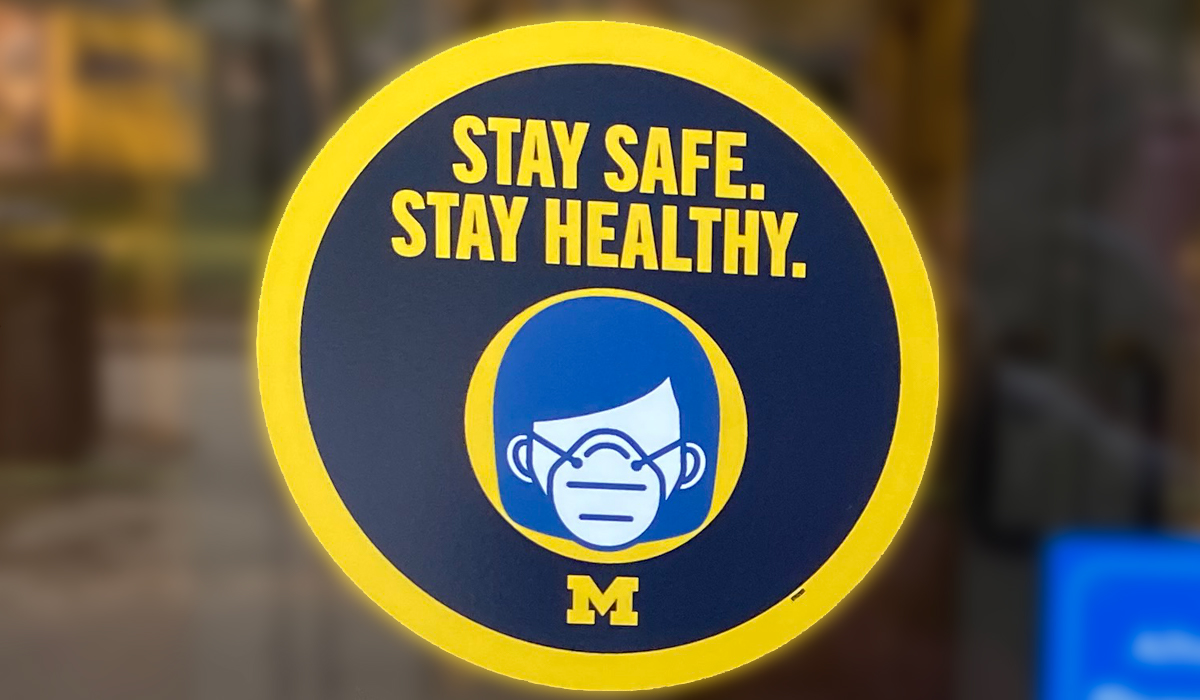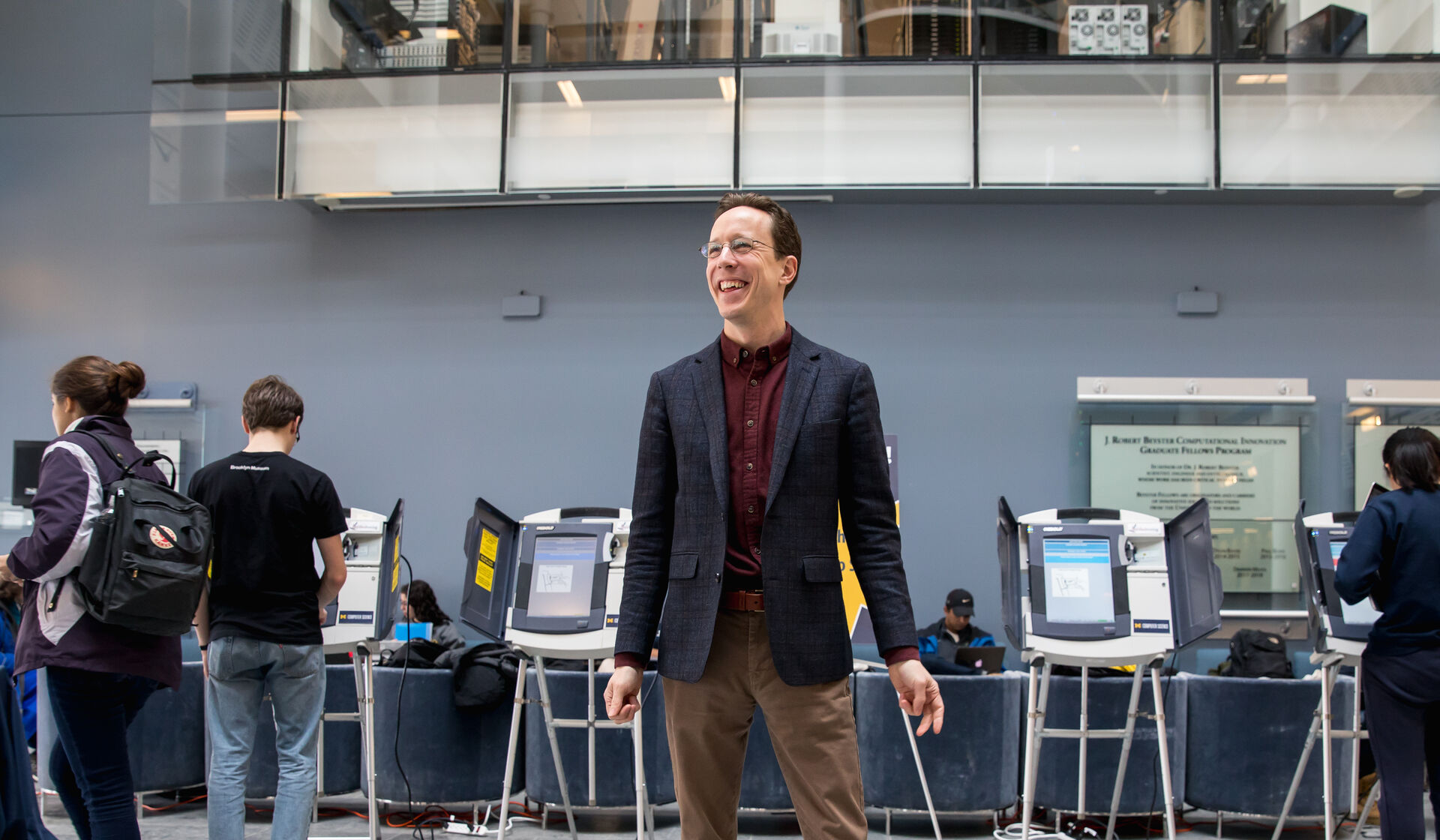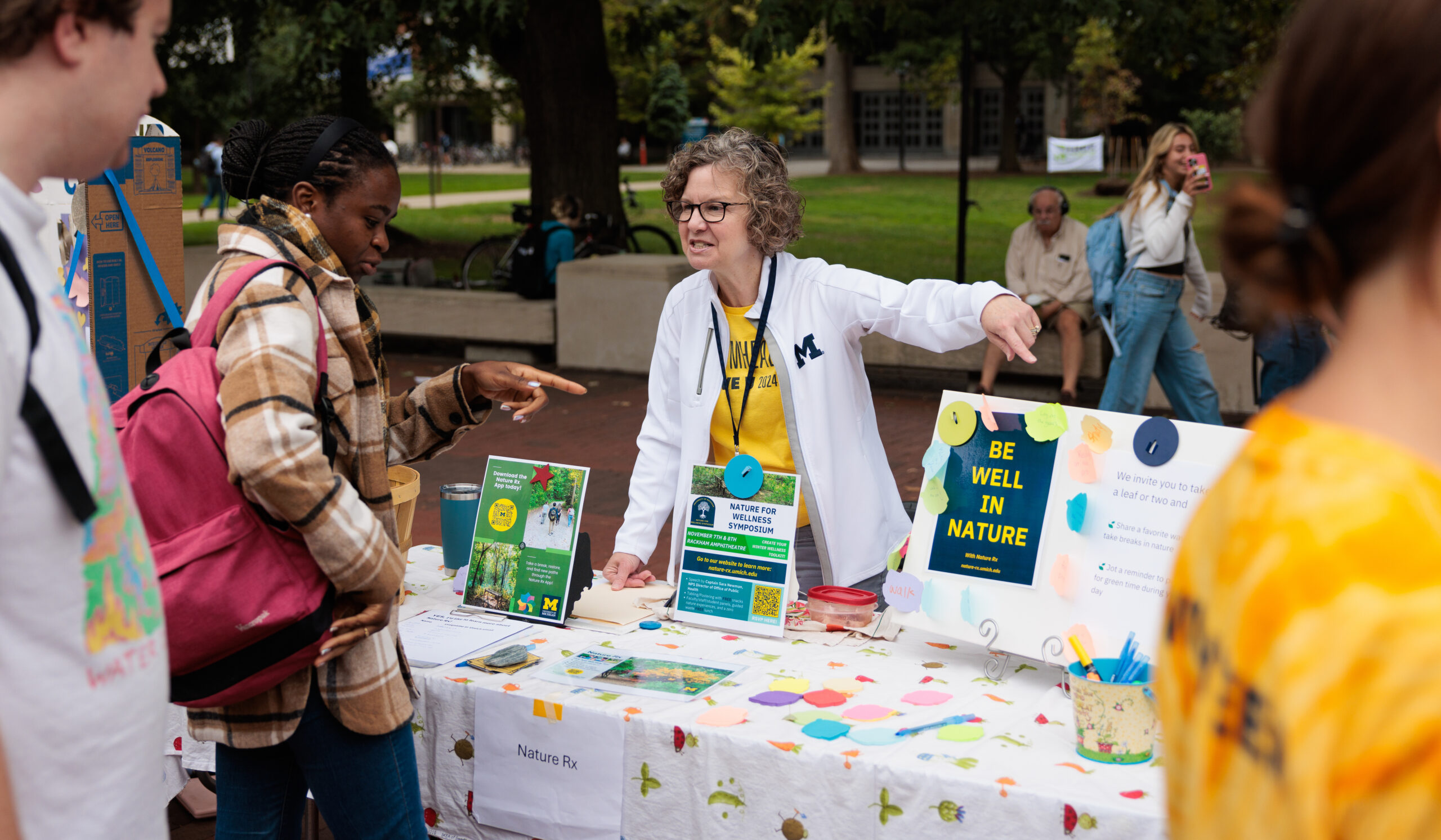Students who returned to classes on the Ann Arbor campus on Aug. 31 quickly encountered a University ready to battle COVID-19. Canopies are now set up across the University, allowing students to study and dine outside. Buses are following new routes to shorten rides, and the dining halls and cafes are distributing boxed meals.
Those are just a few examples of U-M’s plans now in place, some of which are outlined below.
The Campus Maize & Blueprint
This website shares the University’s plan for protecting the entire U-M community from COVID-19. It includes updates as well as the dashboard with the number of confirmed cases in the U-M community.
Called a “guide to living, learning, and working together safely,” the website outlines the new protocols that students, faculty, and staff must follow, such as the use of face coverings on all U-M property. Libraries are available only to those who have reserved a study space or are picking up a previously ordered book. Academic buildings are accessible to all students, given that the fall semester is a hybrid of online and in-person classes. However, before entering a building, students must tap their phone on a QR code to show they have completed their daily health screening and are symptom-free.
Campus Canopies
Open-sided canopies reduce the density inside buildings while providing students with outdoor space for studying, eating, and taking a break between classes. With tables and chairs spaced out to maintain social distancing, the canopies are open from 8 a.m. to sunset Monday through Friday, and from noon until sunset on weekends, through Oct. 28.
Nine of the canopies are located on Central Campus and four on North Campus. Combined, they provide seating for approximately 500 people. On the first day of classes, it was apparent students were using these outdoor spaces.
A Safer Bus System
To design a safer bus system for the pandemic, Michigan Engineering researchers simulated how aerosol particles exhaled from passengers sitting in any seat would travel through the vehicle under different conditions. They also used algorithms to overhaul routes, reducing passengers’ time on buses to minimize possible exposure to the virus.
The new, shorter bus routes not only limit rides to 15 minutes or less, they also enable more frequent service with the same number of buses, reducing wait times as well as the number of passengers on each bus. All bus riders and drivers must wear face coverings, leave windows open, and limit capacity to nearly half.
Researchers from the School of Public Health are also wiping down the buses to determine how much coronavirus is present in the environment on campus and whether that has any relationship on COVID-19 infection rates within the University community. The researchers are also studying samples from sewers and classrooms.
Meals to Go
Michigan Dining is now offering boxed meals so students can eat outside the dining halls. Students also must social distance while waiting in line or eating inside the dining halls. To alleviate lines in resident halls, the cafes at South Quad, the Michigan Union, and the Michigan League, among others, are offering additional take-out options.
Also available are “Feel Better Meals.” Any student feeling ill is encouraged to order a meal at least two hours in advance. A resident adviser, roommate, or friend can then pick it up and deliver it to the student’s room. Sandwiches and salads may be picked up at any time. With so much take-out packaging, students are also being encouraged to properly compost and recycle any waste.
Testing
Students who want to be tested for the virus must first book an appointment with a clinician at the University Health Service (UHS). Currently, UHS is testing anyone with more than one symptom. Those who have symptoms and/or test positive for COVID-19 are encouraged to isolate and call UHS. Those concerned they may have had sustained close contact (within 6 feet for more than 15 minutes) with a person who has COVID-19 should quarantine.
On- and off-campus spaces will be identified for use by any student who needs quarantine or isolation. Students also may choose to isolate or quarantine with their families at home. UHS has set up a special COVID-19 page with more information.





